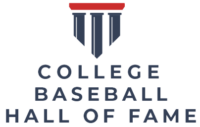I recently emailed the National Association of Intercollegiate Athletics (NAIA) asking for year-end stats from 1957 through 1969. Back when I was a volunteer sports information director for baseball at (then) Ohio Dominican College, I had collected stats from 1970 through the mid-1990s. Chad Waller and Steve Bechard of the NAIA were kind enough to follow through with my request and dug up the older stats for me.
The National Association of Intercollegiate Athletics was originally founded in 1940 as the National Association of Intercollegiate Basketball, though the organiation first sponsored a national tournament in 1937.
In 1952 the NAIB became the National Association of Intercollegiate Athletics and the following year, the NAIA took a giant leap forward by voting to admit HBCU schools into its membership. Many of them who had never been affiliated with a national association eagerly joined. Then in 1956, the group voted to expand it championship series to include a baseball tournament starting in 1957.
By 1959, HBCU baseball teams had already made their presence felt when Southern University (with then future MLB great Lou Brock) won the title in only the NAIA’s third annual baseball championship. In 1963 and again in 1964, Grambling finished second in the national tournament.
Though no other HBCU teams won another NAIA baseball title, beginning with the first year that year-end statistics were tabulated in 1960, both team and individual statistics were dominated by HBCU hitters and pitchers.
Like quite a few non-HBCU schools who were in the athletic upper-eschelon of the NAIA at one time or another, most HBCU schools eventually left the organization in favor of the NCAA. Some schools, like Howard University, Tennessee State and Central State ultimately dropped baseball as an intercollegiate sport. Even with these losses, the National Association of Intercollegiate Athletics remained and still remains a strong, viable alternative to NCAA membership. Yet, in the years from 1960 to 1970, names from HBCU baseball programs were almost always among the nation’s NAIA statistical leaders.
In part two, I’ll delve into the stats and present some of the outstanding individual and team performances. Some resulted in All-American recognition, some were fore tellers of MLB careers and others were just indicators of great college careers on the road to professional success.





































